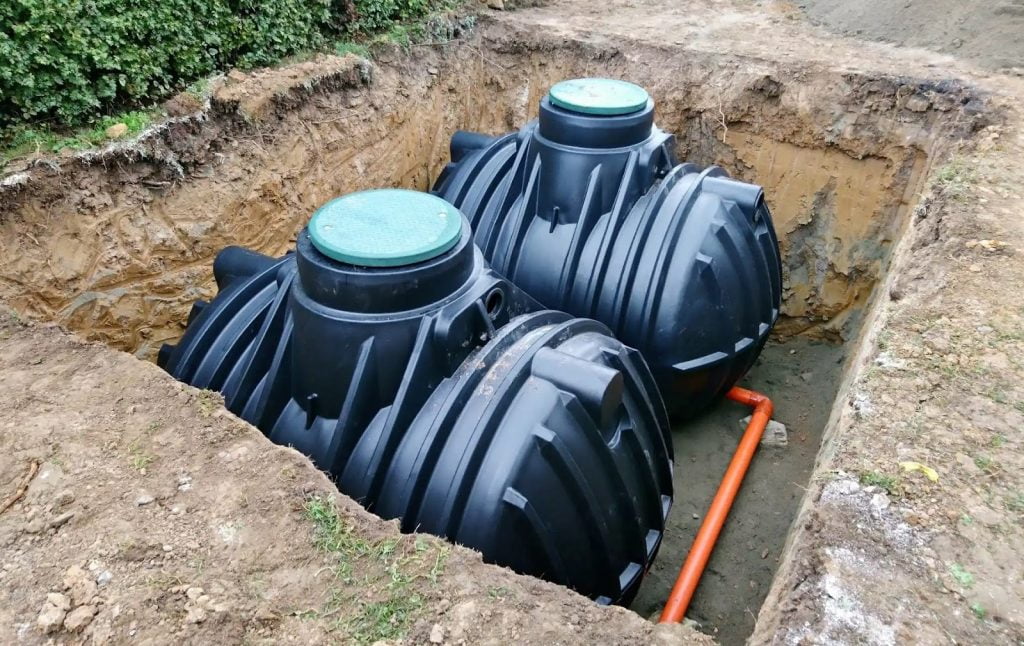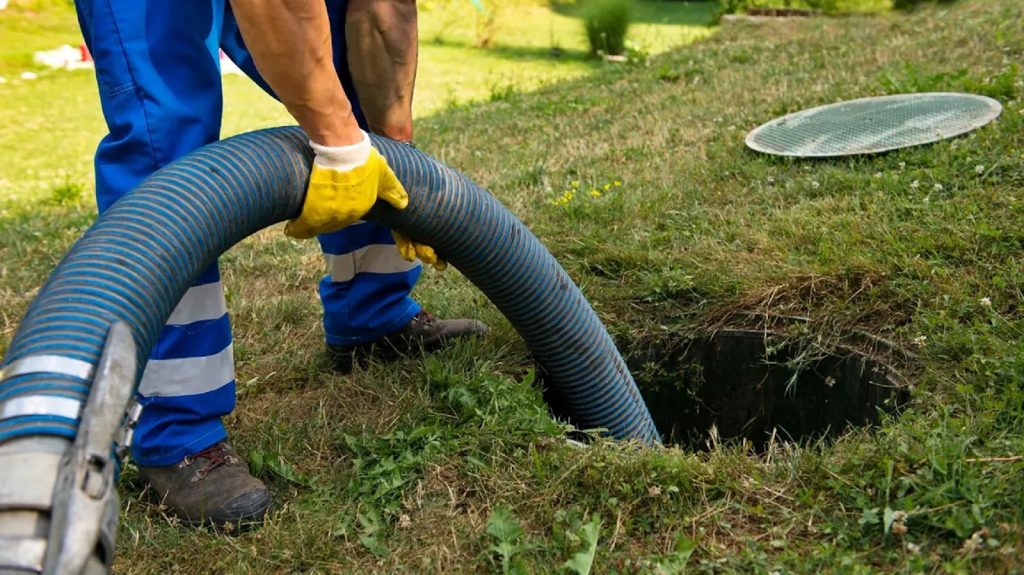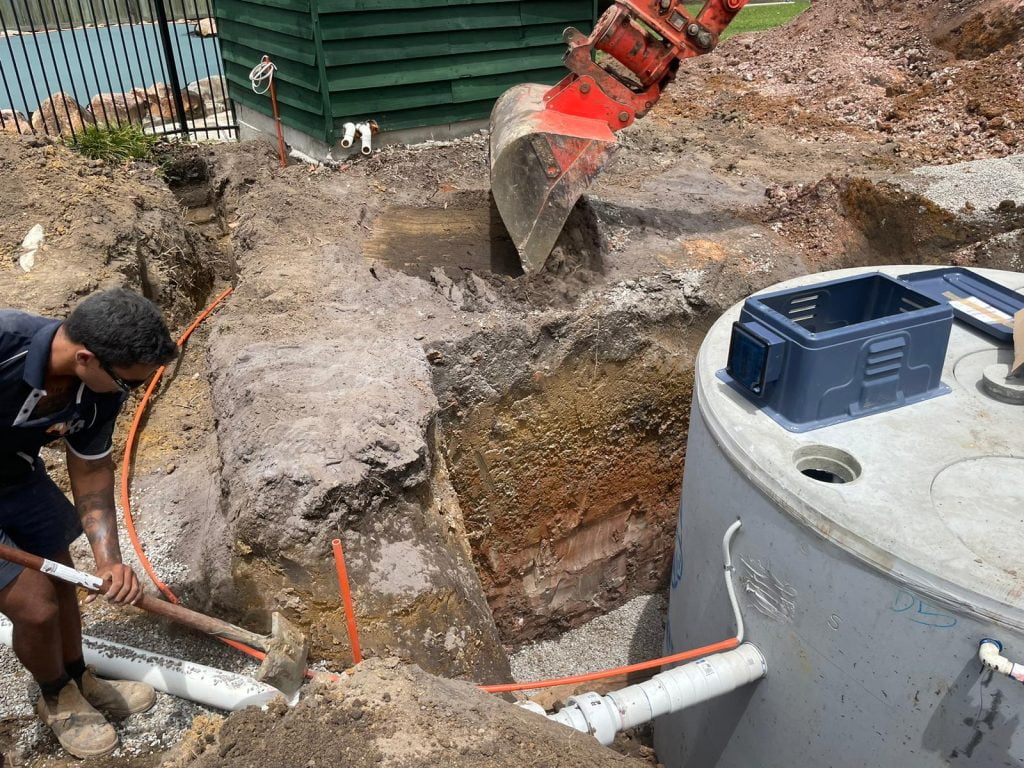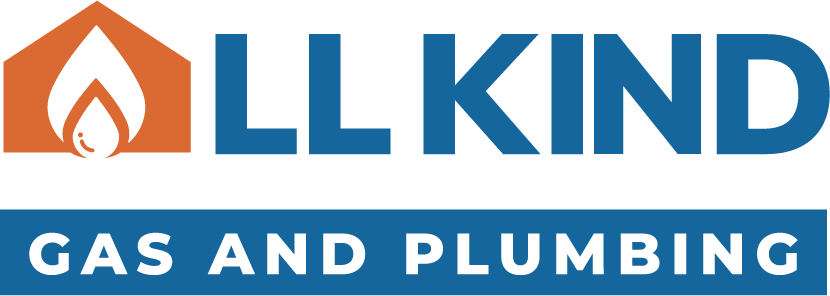Septic tanks are an essential component of septic systems, which are crucial for managing wastewater in areas without access to centralised sewage systems. Understanding how septic systems work, particularly the role of septic tanks is vital for homeowners to ensure proper maintenance and prevent potential issues.
What is a Septic Tank System?
A septic system is a self-contained wastewater treatment solution for homes and buildings not connected to a municipal sewage system. It consists of a septic tank, drain field, and associated piping. The septic tank is a crucial component that separates solid waste (sludge) from the liquid effluent. The sludge settles at the bottom of the tank while grease and scum float on top.


Bacterial action breaks down the waste, and the effluent flows into the drain field for further treatment. Unlike municipal sewage systems that transport waste to a centralised treatment plant, septic systems require regular maintenance to prevent clogs and ensure proper function.
How Do Septic Systems Work?
A septic system works by treating wastewater on-site through a multi-step process.
- When wastewater enters the septic tank, it separates into three layers: solid sludge at the bottom, liquid effluent in the middle, and scum (grease, oils, and fats) that float to the top.
- Bacterial activity in the tank breaks down the solids and helps treat the wastewater.
- The liquid effluent exits the tank through an outlet pipe and flows into a drain field or drainage field, where it is dispersed through perforated pipes and filtered by the soil before reaching groundwater.
The septic tank system is typically buried underground and may be made of concrete, fibreglass, or polyethylene. Regular maintenance is crucial to prevent failing septic systems and ensure proper wastewater treatment. Homeowners should seek information on septic tank care to avoid costly repairs and potential health hazards associated with a malfunctioning sewage system.
Septic Tank Design and Function
A septic tank is the central component of a household septic system. It is typically made of concrete, fibreglass, or polyethylene and is designed to hold and treat wastewater from toilets, showers, and kitchen sinks. The tank’s design includes an inlet pipe for receiving wastewater and an outlet pipe for releasing treated effluent. Baffles are installed to prevent scum and solids from leaving the tank and clogging the drain field. Inside the tank, wastewater separates into three distinct layers: scum (floating on top), effluent (liquid in the middle), and sludge (solids that sink to the bottom).


Anaerobic bacteria break down the organic material in the tank, initiating the treatment process. As the effluent leaves the tank, it enters the disposal area or drain field, seeping into the soil for further treatment. A septic tank diagram can help illustrate the components and function of conventional septic systems, including older systems that may require upgrades for efficient greywater management.
Drain Field or Leach Field
The drain field, a leach field, is a crucial septic system component. Its purpose is to provide secondary treatment of the wastewater discharged from the septic tank. The drain field consists of perforated pipes in trenches filled with gravel or other porous material. As the wastewater percolates through the soil, it undergoes further filtration and treatment, removing harmful bacteria, viruses, and nutrients before reaching groundwater. Below are other types of drain fields you can consider:


Conventional drain fields:
- Most common type of drain field
- Consists of trenches filled with gravel or crushed stone
- Perforated pipes distribute wastewater evenly throughout the trenches
- Suitable for areas with good soil percolation and deep water tables
Mound systems:
- Used in areas with high water tables, shallow bedrock, or poor soil percolation
- Wastewater is pumped from the septic tank to a mound of sand and gravel
- Perforated pipes distribute wastewater evenly throughout the mound
- As wastewater percolates through the mound, it is treated before reaching the native soil
Sand filter systems:
- Used in areas with poor soil percolation or high water tables
- Wastewater is pumped from the septic tank to a bed of sand
- Sand filters out contaminants and provides additional treatment
- Treated wastewater is then discharged to a drain field or other dispersal system
Drip irrigation systems:
- Used in areas with shallow soil or irregular terrain
- Wastewater is pumped from the septic tank to a network of small-diameter pipes
- Pipes are installed just below the ground surface
- Wastewater is dispersed slowly and evenly over a large area
- Provides a high level of treatment and minimises the risk of groundwater contamination
Maintaining Your Septic System
Regular maintenance is essential for your septic system’s longevity and proper function. Homeowners should have their septic tank inspected every 1-3 years and pumped out every 3-5 years, depending on the tank size and household water usage. Signs of septic system failure include slow drains, gurgling sounds, foul odours, and pooling water in the drain field area.


Adopt best practices such as conserving water, avoiding the disposal of non-biodegradable materials and harsh chemicals, and spreading out laundry and dishwasher loads. Proper waste management, such as not flushing wipes, diapers, or other non-biodegradable items, can help maintain the health of your septic system.
Alternative Septic Systems
In addition to conventional septic systems, alternative options like aerobic systems, chambered systems, and constructed wetlands are available. Aerobic systems introduce oxygen to promote bacterial growth and improve wastewater treatment.
Chambered systems use pre-fabricated chambers instead of gravel in the drain field. Constructed wetlands mimic natural wetlands to filter and treat wastewater. These alternatives suit sites with limited space, poor soil conditions, or high water tables.
Proper septic system maintenance protects property, health, and the environment. Regular inspections, pumping, and mindful water usage can prevent costly repairs and environmental contamination.
Contact Us Now
If you have issues or have questions about your septic system, please don’t hesitate to seek professional assistance. Contact All Kind Wastewater by email, phone, or site office visit for expert guidance and support in maintaining its optimal performance.






